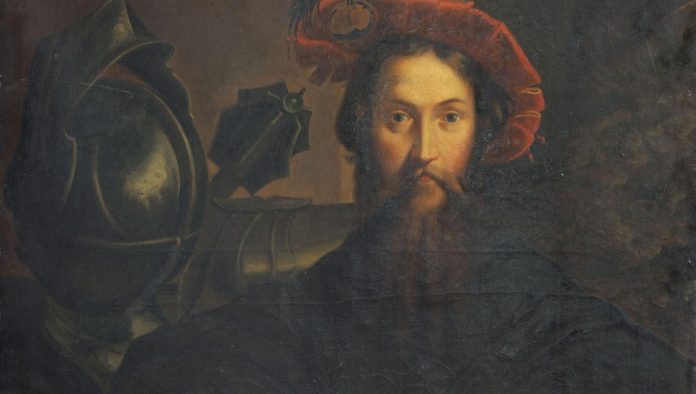Spanish researchers conducted a 22-year investigation into the genetic study of Christopher Columbus’ remains and came to the conclusion that the 15th century explorer was a Sephardic Jew from Western Europe, The Guardian reported.
The outcome of the study came to light in a special programme on Saturday evening on the national television channel RTVE, timed to coincide with Spain’s National Day, which commemorates Columbus’ arrival in the New World on 12 October 1492. The claim now suggests the intriguing idea that the explorer whose voyage to the New World changed the course of world history may have been a Spanish Jew.
Jose Antonio Lorente, a forensic scientist from the University of Granada who led the study, said his analysis showed that Columbus’ DNA was compatible with Jewish origin. “We have very partial, but sufficient, DNA from Christopher Columbus. We have DNA from his son Fernando Colón, and in both the Y [male] chromosome and mitochondrial DNA [transmitted by the mother] of Fernando there are traces compatible with a Jewish origin,” he said.
“The DNA indicates that Christopher Columbus’s origin lies in the western Mediterranean. If there weren’t Jews in Genoa in the 15th century, the likelihood that he was from there is minimal. Neither was there a large Jewish presence in the rest of the Italian peninsula, which makes things very tenuous,” according to the researcher.
Lorente, after analysing 25 possible places, said only one thing could be claimed: Columbus was born in Western Europe. On Thursday, he said they confirmed previous theories that the remains in Seville Cathedral belonged to Columbus.
“We’re left with the Spanish Mediterranean area, the Balearic islands and Sicily. But Sicily would be strange because then Christopher Columbus would have been written with some trace of Italian or the Sicilian language. That all means that his most likely origin is in the Spanish Mediterranean area or the Balearic islands which belonged to the crown of Aragón at the time,” he added.
The discovery ended 500 years of speculation about Columbus’ birthplace and nationality, as it had been speculated for centuries that the explorer could have been Genoese, Basque, Catalan, Galician, Greek, Portuguese or Scottish.
Columbus died in Valladolid, Spain, in 1506. However, he wished to be buried on the island of Española, which is today divided into Haiti and the Dominican Republic. His remains were moved there in 1542, transported to Cuba in 1795, and then to Seville in 1898 when Spain lost control of Cuba after the Spanish-American War.
Some see conclusions with caution
The doubts are that the results were published without prior scrutiny by others in the scientific community. Rodrigo Barker, an archaeogenetics expert at the Max Planck Society Institute for Evolutionary Anthropology, said:
“Normally, you send your article to a scientific journal. An editor is then assigned to the piece and at least three independent reviewers examine the work and decide whether it’s scientifically valid or not,” according to him. “If it is, it gets published and so the rest of the scientific community can say whether they agree with it or not. Putting it on the screen, far from that dialogue and with all this media focus gets in the way of the scientific community being able to say something about it.”
Antonio Alonso, a geneticist and former director of Spain’s National Institute of Toxicology and Forensic Science, said: “Unfortunately, from a scientific point of view, we can’t really evaluate what was in the documentary because they offered no data from the analysis whatsoever. My conclusion is that the documentary never shows Columbus’s DNA and, as scientists, we don’t know what analysis was undertaken.”
Lorente, for his part, defended the results of the study: “Our team and the university have always considered this study into Christopher Columbus and his family as a single, joined-up and inseparable unit, and nothing will be published until the investigation is completed.”
